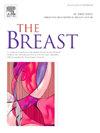Feasibility of the omission of axillary surgery in node-negative early breast cancer: a systematic review and meta-analysis
IF 7.9
2区 医学
Q1 OBSTETRICS & GYNECOLOGY
引用次数: 0
Abstract
Introduction
Recent and historical trials have suggested that the omission of axillary surgery is oncologically safe in node-negative early breast cancer. This meta-analysis investigates the feasibility of the omission of axillary surgery (SLNB or ALND) in terms of oncological outcomes and adjuvant treatment decisions.
Method
A systematic search of Medline, Embase and Cochrane Central was conducted. Random-effect meta-analysis was conducted to compare recurrence and survival outcomes between omission of axillary surgery and SLNB or ALND. Differences in real-world adjuvant treatment decisions and patient reported outcomes were investigated.
Results
Ten studies (omission, n = 3716; SLNB/ALND, n = 4604/785) investigated oncological outcomes (pooled rates, T1 88 %; Grade 1–2 80 %; ER-positive 91.2 %; HER2-positive 4.4 %; ductal carcinoma 74 %). In the omitted group, the pooled rates of local, axillary and distant recurrence (follow-up, 8 years 9 months) were 3.0 % (95 %CI,1.5–5.9 %), 2.5 % (95 %CI,1.3–4.8 %; 5year, 1.0 %) and 3.6 % (95 %CI,2.0–6.5 %; 5year, 2.7 %), respectively. When comparing omission to SLNB/ALND, there were no differences in local recurrence (OR 0.91; 95 %CI,0.56–1.50), distant metastasis (OR 0.91; 95 %CI,0.56–1.50), BCM (OR 1.00; 95 %CI,0.63–1.60), OS (HR 0.88; 95 %CI,0.65–1.19) or DFS (HR 0.91; 95 %CI,0.76–1.11). Axillary recurrence was higher in the omission group compared to SLNB/ALND (OR 4.42; 95 %CI,1.5–12.8) but not in SLNB alone (OR 2.85; 95 %CI,0.1–133.8). Omission of axillary surgery was associated with lower rates of adjuvant chemotherapy, radiotherapy and hormonal treatment but quality of evidence was poor.
Conclusion
Omission of axillary surgery is safe in node-negative early breast cancer. Prospective data is required to investigate the impact of omission on adjuvant treatment decision.
淋巴结阴性早期乳腺癌省略腋窝手术的可行性:系统回顾和荟萃分析
最近和历史上的试验表明,在淋巴结阴性的早期乳腺癌中,不进行腋窝手术在肿瘤上是安全的。本荟萃分析调查了在肿瘤预后和辅助治疗决策方面不进行腋窝手术(SLNB或ALND)的可行性。方法系统检索Medline、Embase和Cochrane Central数据库。进行随机效应荟萃分析,比较省略腋窝手术与SLNB或ALND之间的复发和生存结果。研究了现实世界辅助治疗决策和患者报告结果的差异。结果10项研究(遗漏,n = 3716; SLNB/ALND, n = 4604/785)调查了肿瘤预后(合并率,T1 88%; 1-2级80%;er阳性91.2%;her2阳性4.4%;导管癌74%)。漏诊组局部、腋窝和远处复发率(随访8年9个月)分别为3.0% (95% CI,1.5 - 5.9%)、2.5% (95% CI,1.3 - 4.8%; 5年,1.0%)和3.6% (95% CI,2.0 - 6.5%; 5年,2.7%)。当将遗漏与SLNB/ALND进行比较时,在局部复发(OR 0.91; 95% CI, 0.56-1.50)、远处转移(OR 0.91; 95% CI, 0.56-1.50)、BCM (OR 1.00; 95% CI, 0.63-1.60)、OS (HR 0.88; 95% CI, 0.65-1.19)或DFS (HR 0.91; 95% CI, 0.76-1.11)方面没有差异。与SLNB/ALND相比,遗漏组腋窝复发率更高(OR 4.42; 95% CI, 1.5-12.8),但单独SLNB组不存在腋窝复发率(OR 2.85; 95% CI, 0.1-133.8)。遗漏腋窝手术与辅助化疗、放疗和激素治疗率较低相关,但证据质量较差。结论淋巴结阴性早期乳腺癌行腋窝手术是安全的。需要前瞻性数据来调查遗漏对辅助治疗决策的影响。
本文章由计算机程序翻译,如有差异,请以英文原文为准。
求助全文
约1分钟内获得全文
求助全文
来源期刊

Breast
医学-妇产科学
CiteScore
8.70
自引率
2.60%
发文量
165
审稿时长
59 days
期刊介绍:
The Breast is an international, multidisciplinary journal for researchers and clinicians, which focuses on translational and clinical research for the advancement of breast cancer prevention, diagnosis and treatment of all stages.
 求助内容:
求助内容: 应助结果提醒方式:
应助结果提醒方式:


